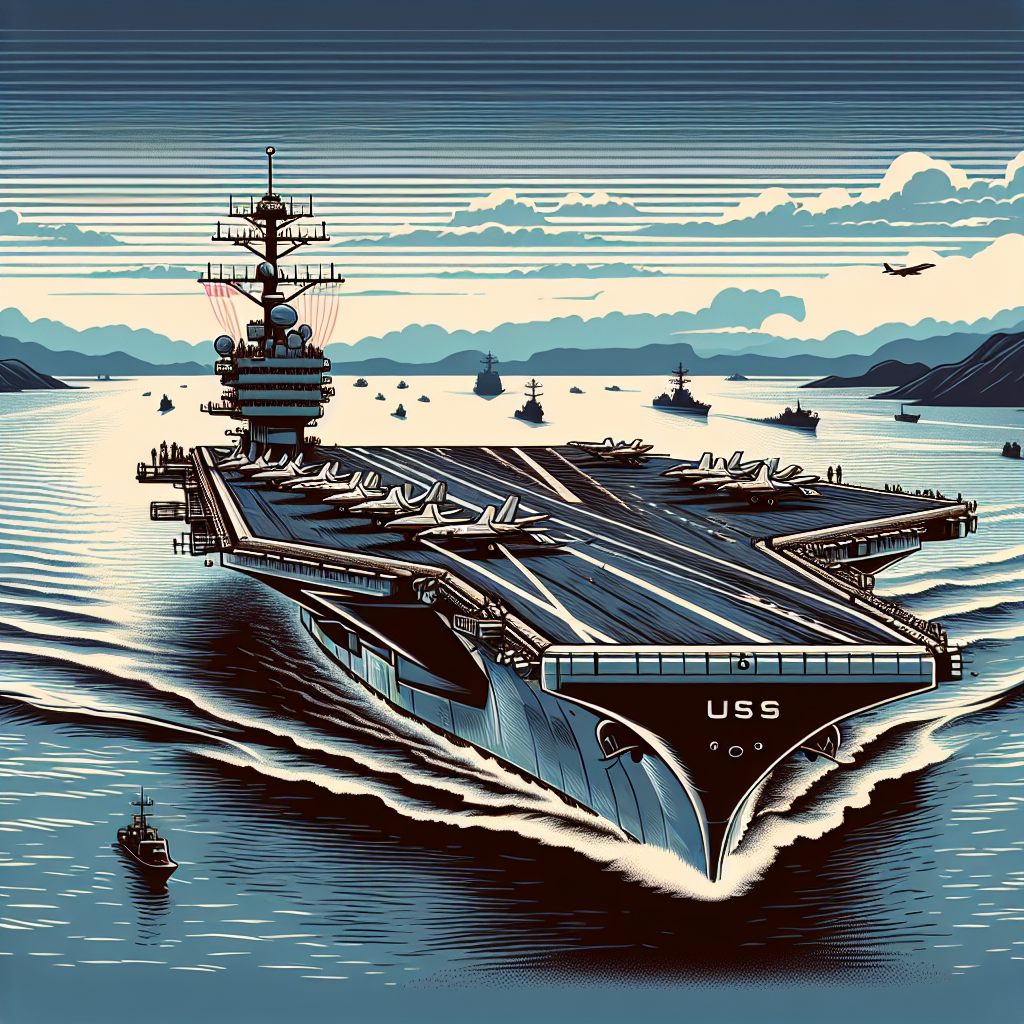The USS Abraham Lincoln aircraft carrier strike group of the United States Navy is currently sailing southward through the Strait of Malacca, entering the South China Sea.
In the early hours of the morning, the Lincoln entered the South China Sea from the Malacca Strait, ignoring warnings from the Chinese side. The US Navy stated that the Lincoln aircraft carrier battle group is conducting routine operations in the operational area of the US Seventh Fleet to maintain freedom and openness in the Indo-Pacific region.
According to the announcement from the US Navy, the Lincoln strike group has been deployed in the Indo-Pacific region for four and a half months. The aircraft carrier left Port Klang in Malaysia on Wednesday, November 27th, and after meeting with the destroyer fleet in the Singapore Strait, it has now entered the South China Sea and will later return to its homeport in San Diego, California.
Before undertaking this mission, the USS Abraham Lincoln visited Port Klang on the 23rd to enhance military cooperation between the US and Malaysia, marking its first visit to Malaysia in 12 years.
During this period, the USS Spruance (DDG-111) and USS Michael Murphy (DDG-112) were docked at Phuket Island in Thailand, and the USS Frank E. Petersen Jr. (DDG-121) was docked at Sembawang in Singapore.
Analysis indicates that the US sending the Abraham Lincoln and the Third Carrier Strike Group (CSG) for military and civil exchanges in Indo-Pacific countries on their return journey after completing deployment missions in the Middle East highlights America’s emphasis on the Indo-Pacific region.
According to the Seventh Fleet’s announcement, the US Navy’s P-8A maritime patrol aircraft crossed the Taiwan Strait on the 26th, reaffirming the US military’s commitment to conducting flights, navigation, and operations wherever international law permits to uphold navigation rights and freedoms for all countries.
The announcement stated: “This is the third time this year that the P-8A patrol aircraft has flown over the Taiwan Strait in international airspace, demonstrating America’s commitment to a free and open Indo-Pacific region.” Previous instances occurred on April 17th and September 17th.
This latest incident underscores the ongoing tension between the US and Beijing over Taiwan, serving as a flashpoint in their broader geopolitical competition. While the US and Taiwan do not have formal diplomatic relations, the US is a longstanding ally of democratic Taiwan.
Taiwan’s Ministry of National Defense confirmed that the P-8A aircraft flew from south to north through the Taiwan Strait, with the Taiwanese military monitoring the situation and confirming normal conditions in the surrounding airspace and waters.
China once again reacted strongly, accusing the US of “publicity stunts” and stating that it had dispatched naval and air forces to monitor and warn off US vessels.
The US military frequently conducts such transit operations in the Taiwan Strait, with ships and aircraft passing through about once a month. Despite China’s objections, these actions are part of the US commitment to maintaining freedom of navigation in international waters.
Meanwhile, the Japan Self-Defense Forces detected multiple People’s Liberation Army Navy ships sailing in waters near Japan and immediately began tracking and monitoring these vessels.
The Joint Staff of Japan stated that the Chinese missile destroyer Xi’an was found on the morning of the 27th about 74 miles north of Miyako Island, sailing southeast between Miyako and Okinawa, entering the Philippine Sea. During this time, the Japanese supply ship Tanzai (AOE-426) and the P-3C anti-submarine patrol aircraft monitored the Chinese warships.
At 3 o’clock the next morning, the Chinese vessel Zaizhuang was found crossing the Tsushima Strait into the Sea of Japan. The First Air Group of the Japan Maritime Self-Defense Force promptly tracked and monitored the vessel.
Japanese officials previously emphasized that the Japanese government takes very seriously the repeated passage and intrusion of Chinese vessels into adjacent waters and Japanese territorial waters.

